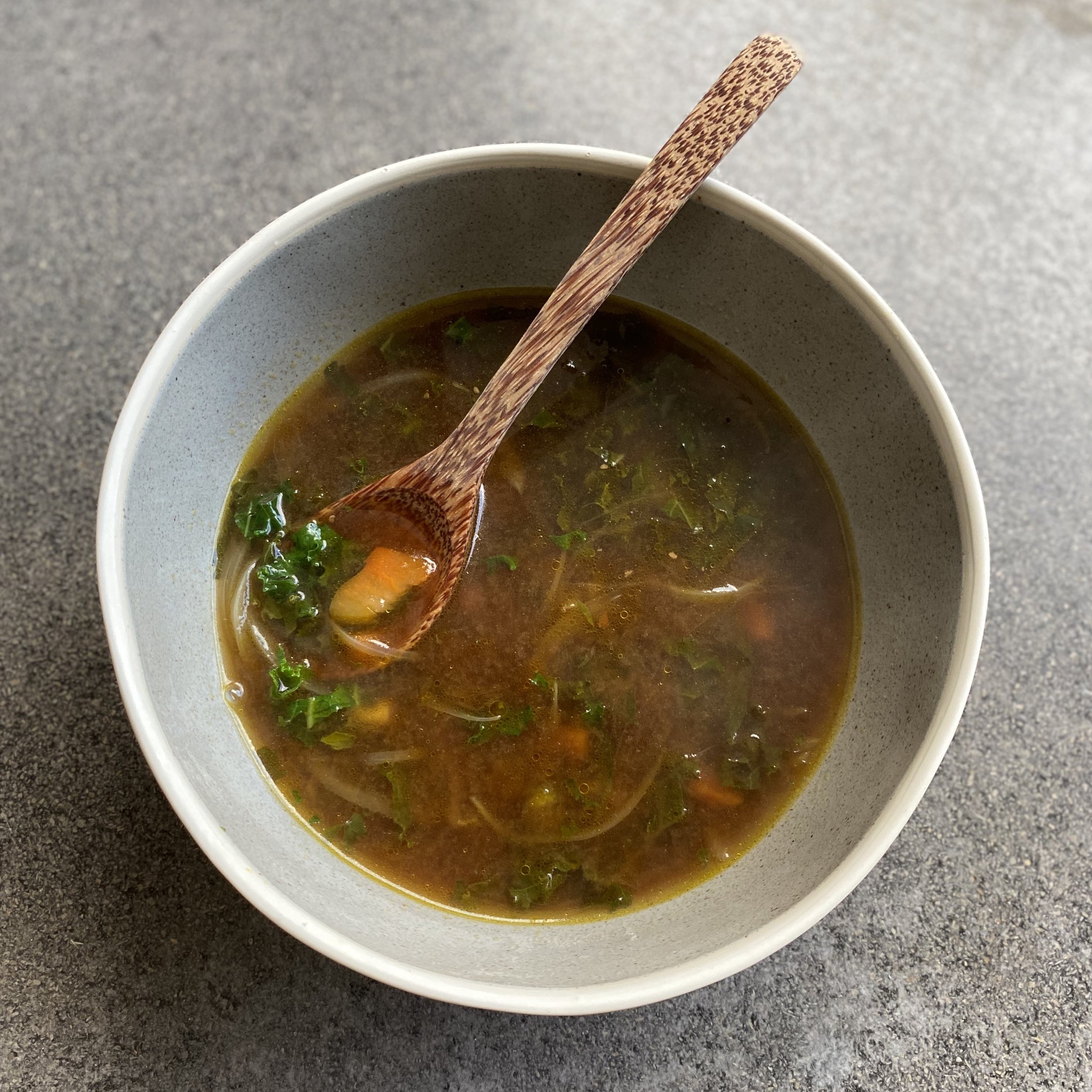Miso Happy
7 September 2023
According to Japanese mythology, miso (pronounced mee-so) is a gift from the gods to mankind to ensure lasting health, longevity and happiness. Okinawa, in Japan, is one of the world’s most heavily studied Blue Zones - areas where people experience exceptionally long, happy and healthy lives. Miso soup is central to Okinawan cuisine.
Watch Dan Buettner’s four-part series "Live to 100: Secrets of the Blue Zones" now streaming on NetflixGrowing up, I cannot ever recall hearing the word ‘miso’, let alone eating it. I was introduced to miso in London in the late nineties. It was only whilst visiting Japan a few years later that I realised its dietary signficance. Good quality miso is a nutritious balance of natural carbohydrates, essential oils, minerals, vitamins, and protein of the highest quality.
Miso is a fermented food and is most often made from a combination of soya beans, grain (brown rice or barley), sea salt and an enzyme starter (koji). Unpasteurised miso is a “living food’ and contains enzymes and microorganisms which aid in the digestion of all foods and promote a healthy balance of intestinal flora. Miso is said to boost the immune system, strengthen the blood, remove radioactive elements from the body, and even settle an upset stomach.
Miso comes in several varieties and its quality varies. Traditional miso is made from the highest quality organic ingredients and is aged naturally. Sadly, most of the commercial miso available today contains chemicals and is artificially aged. Miso aged for one year or less is lighter in colour and adds a creamy, more mellow taste to dishes (think sweet white miso). Dark miso is aged much longer and imparts a rich, salty, more meat-like flavour to dishes. Barley miso (also known by its Japanese name of mugi miso) is most suitable for daily use and I recommend this miso for first time use. Barley miso is usually fermented for about 18 - 24 months. Brown rice miso (genmai miso), soya bean miso (hacho miso), red and yellow misos are also available.
Miso is not the instant miso sachets that we sometimes see on shop counters. Let’s leave these sachets for convenience whilst travelling. Rather, when entering your local health shop (although now widely available in general food stores), head straight to the refrigeration section. Therein lies the good quality, paste-like miso that you should be looking for. Don’t let the price put you off. Take comfort in the fact that it lasts forever in your fridge and is an excellent investment in your health.
I love keeping my miso in a glass jar and target those brands that package as such. If you don’t buy it in a glass jar, it’s a good idea to transfer the miso from the plastic packet into a glass jar that you have sterilised in boiling water. It makes life so much easier when you use it.
So, now that you’ve bought your miso, how do you use it?
The easiest way is to dilute it in any hot soup. Remove some cooking liquid from the pot with a ladle and ‘puree’ the miso into the hot liquid (you’re adding about 1 heaped teaspoon miso paste per serving). Stir well to ensure the mixture is smooth and then return it to the pot.
High temperatures destroy some of the beneficial enzymes in miso, so don’t boil the soup once you’ve added the miso - simmer it gently for 2-3 minutes
Miso can flavour anything. You can view it as a vegetarian beef bouillon paste. Use it as an alternative to soya sauce, add it to marinades, dips, spreads and even salad dressings (sweet white miso is recommended here).
I’ve used it ‘medicinally’ and as a very effective pick-me-up on numerous occasions. Miso soup was the first thing I ate after giving birth to my 3 boys. Also, if you’re depleted after intense exercise or been fuelled by too much sugar, it can be very nourishing and balancing. (I was amazed at how many athletes were requesting stock/bouillon cubes from the medical tent on a recent ultra run of mine)
Many of us start the day with a sweet breakfast. If you’re in a ‘Do Something Different’ kinda mood, why not start the day with a cup of miso soup? If you keep it simple, you can make it in the blink of an eye. Perhaps try this for one or two days - see how it makes you feel and/or how it impacts your food choices during the day.

